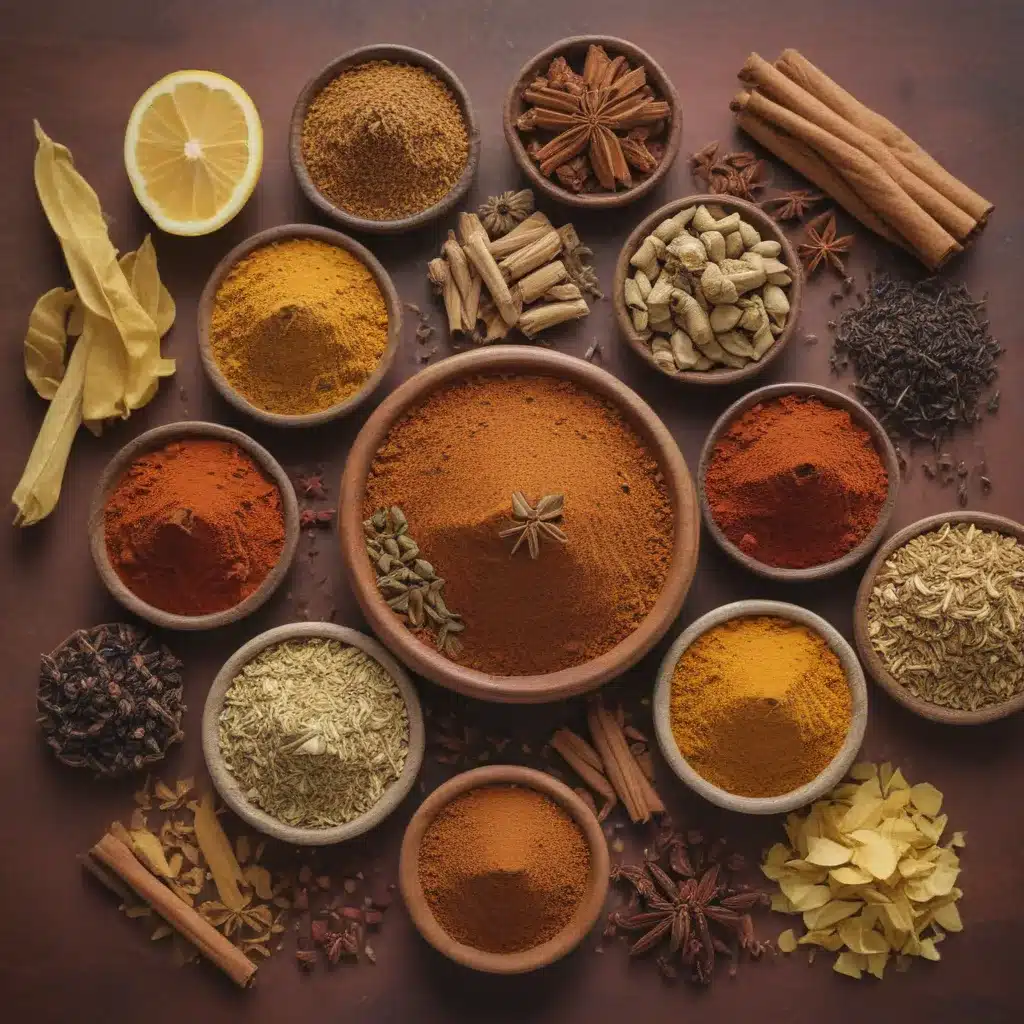
The Enigmatic World of Ras El Hanout
As I step into the bustling kitchen of El Bahia, the Moroccan restaurant in the heart of New York City, the aroma of warm spices instantly transports me to the souks of Marrakech. The air is thick with the heady scent of cumin, cinnamon, and an elusive blend that I’ve been longing to unravel – Ras El Hanout.
This Moroccan spice blend is shrouded in an air of mystery, a closely guarded secret passed down through generations of spice merchants. Each shop, each family, has its own unique recipe, a symphony of anywhere from 10 to a staggering 100 different spices. As I delve into the history and complexity of Ras El Hanout, I can’t help but feel a sense of intrigue and wonder.
The Meaning Behind the Name
The very name “Ras El Hanout” is a clue to the enigmatic nature of this spice blend. Directly translated from Arabic, it means “head of the shop,” indicating that this is the best and most prized spice mix a Moroccan spice merchant has to offer. According to one source, “each shop’s owner has their own unique mix, the best spice mix their shop can provide.”
This exclusivity and secrecy surrounding the recipe is what makes Ras El Hanout so alluring. As I listen to the head chef at El Bahia explain the process of blending their signature Ras El Hanout, I’m struck by the reverence and care they put into each step. “It’s not just a spice blend,” they tell me, “it’s the essence of Moroccan cuisine, the heart and soul of our dishes.”
The Spice Merchant’s Treasure Trove
Delving deeper into the world of Ras El Hanout, I uncover a dizzying array of potential ingredients. According to one source, some Ras El Hanout blends may contain as many as 50 to 100 different spices, including exotic and rare ingredients like grains of paradise, orris root, and even the controversial Spanish fly – an alleged aphrodisiac.
The sheer variety of spices used in Ras El Hanout is a testament to the creativity and skill of Moroccan spice merchants. Coriander, cumin, ginger, and cardamom are common staples, but the blend can also include everything from fennel seeds and lavender to rose petals and nigella. It’s a spice lover’s dream, a veritable treasure trove of aromatic delights.
Deciphering the Elusive Blend
As I pore over recipe after recipe, I’m struck by the fact that no two Ras El Hanout blends are exactly alike. Even within the same region or even on the same street, the spice mixes can vary drastically. One source notes that “the blends that all go by the name of Ras el Hanout can be radically different from one shop to the next on the same street, let alone from towns in the north or south of Morocco.”
This lack of uniformity is both maddening and exhilarating. It means that the Ras El Hanout I experience at El Bahia will be unique, a reflection of the restaurant’s own culinary heritage and the personal touch of the spice master who crafted it. It’s a journey of discovery, with each bite revealing new layers of complexity and nuance.
Crafting a Ras El Hanout Blend
Inspired by my research, I decide to embark on my own quest to create a Ras El Hanout blend. I gather an array of spices, carefully measuring and blending them, much like the spice merchants of Marrakech. One source provides a detailed recipe that I use as a starting point, but I can’t resist the urge to add my own personal touches.
As I grind the spices to a fine powder, the aroma fills the air, transporting me to a bustling Moroccan marketplace. I inhale deeply, savoring the earthy notes of cumin, the warmth of cinnamon, and the subtle floral undertones of the saffron. It’s a sensory experience that I know will translate into the dishes I create with this Ras El Hanout blend.
Exploring the Ras El Hanout Palette
The true beauty of Ras El Hanout lies in its versatility. It’s a spice blend that can elevate a wide range of Moroccan dishes, from tagines and couscous to grilled meats and roasted vegetables. One recipe I encountered even suggested using it as a rub for lamb, transforming the humble meat into a flavor-packed masterpiece.
As I experiment with my homemade Ras El Hanout, I’m struck by the depth and complexity of the blend. The warm, earthy notes of cumin and cinnamon provide a solid foundation, while the floral and citrusy accents of spices like coriander and lemon zest add a delightful brightness. The heat from the chili powder and cayenne linger on the tongue, offering a surprising kick that keeps you coming back for more.
Ras El Hanout: A Culinary Odyssey
Ras El Hanout is more than just a spice blend – it’s a culinary odyssey, a gateway to the rich and vibrant flavors of Moroccan cuisine. As I continue to explore its mysteries, I can’t help but feel a sense of reverence for the generations of spice merchants who have perfected this elusive blend.
At El Bahia, the Ras El Hanout is the cornerstone of their menu, infusing each dish with the essence of Moroccan tradition. Whether it’s a fragrant tagine or a boldly seasoned couscous, the spice blend is the thread that ties the flavors together, creating a symphony of taste that transports diners to the heart of Marrakech.
As I savor the final bites of my meal, I’m left with a deep appreciation for the complexities of Ras El Hanout and the stories it holds. It’s a spice blend that defies simple categorization, a culinary treasure that continues to captivate and inspire. And as I step out into the bustling streets of New York City, I can’t wait to return to El Bahia and explore the depths of this mysterious Moroccan spice blend once more.


